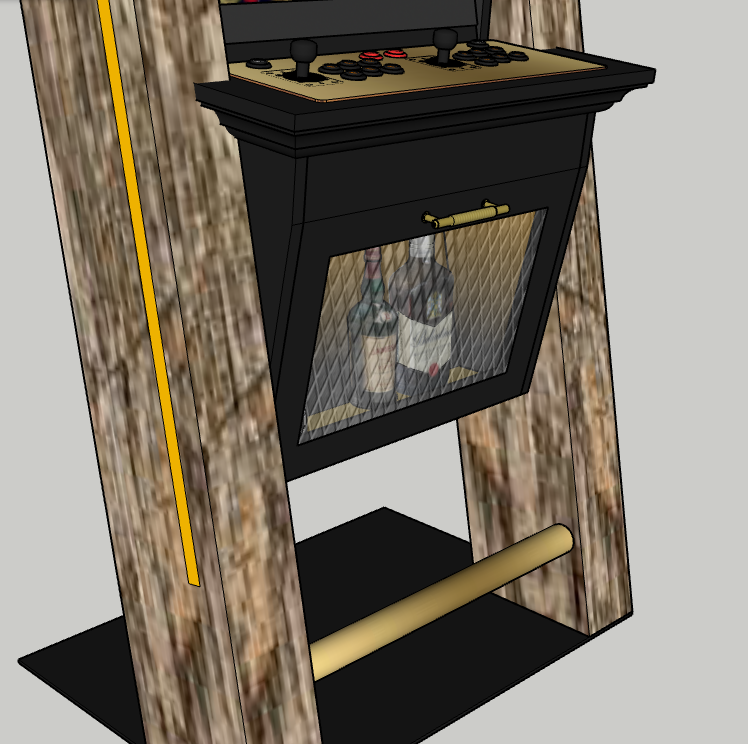“Designing ‘The Guillotine’ Arcade Cabinet: How I Use Hyperphantasia to Build What Doesn’t Exist Yet”
Arcade Cabinet “The Guillotine”
There’s no pencil, no paper, no SketchUp file.
Just barn beams, brass buttons, and a whiskey glass floating around in my head like a lucid daydream on loop.
That’s how most of my designs start — and The Guillotine was no different.
I’d been toying with the idea of making an arcade cabinet for a while. Not one of those prefab plywood rigs that looks like it belongs in a teenage basement, but something built — heavy, grown-up, unapologetically masculine. Something that felt at home in a whiskey room. That’s when I gave myself permission to throw out the rulebook.
Brass Joystick Base with Black Components
The Problem With “Expected”
At first, I thought: I’ll just wrap a standard arcade cabinet in reclaimed wood and call it a day. But the more I pictured it, the more boring it felt. There are already a few of those out there on YouTube. They weren’t bad — just not me. Not Speakeasy Woodworking.
So instead of skinning an arcade cabinet in old wood, I decided to explode the entire concept and rebuild it from the ground up, piece by piece, using the visual language of the old world: barn beams, brass footrails, LED lighting, and a hidden whiskey cabinet. I stopped thinking of it as a cabinet and started thinking of it as a bar you could play Street Fighter on.
The design took shape in my head first — like 95% of my builds do — thanks to something called hyperphantasia.
Designing furniture in my mental sandbox
Living With the Dial Turned to Daydream
Hyperphantasia means I can see things in my mind with near-photographic clarity. It’s not just a vague sketch — it’s a full-scale, high-resolution rendering in motion, lit from the right angle, with textures I can feel. I run these simulations constantly.
I’ve learned to manage it like a mental dial:
Turned all the way left = fully present in reality (rare)
Dead center = half here, half in my mental design space (about 80% of my waking life)
Turned all the way right = 98% simulation mode. That’s where the magic happens
That’s how The Guillotine was born — in the back of my mind while sweeping the shop or washing dishes. When I needed detail, I’d put on music, zone out, and go fully lucid. I could spin the design in space, test lighting, rotate the components, simulate joinery, and feel the temperature of the materials I was combining.
From Lucid Dream to Digital Model
Once the piece is clear in my mind, I open up SketchUp. I start with a solid block, then carve it down like a digital block of marble. I pull out components, refine clearances, and reassemble the parts just like I do in the shop. This is where I solve for tolerances — things like hinge interference with a drawer pull — and make sure the digital version lives up to the one in my head.
Close up on the foot rail on “The Guillotine” Arcade Cabinet
Why “The Guillotine?”
I named it at the end.
The final version had two vertical barn beam posts with a sleek black cabinet suspended between them. It looked vaguely like a guillotine — and in a weird way, that made sense. It’s bold, dangerous, unapologetically masculine. Plus, it has a pop-out cup holder for your Old Fashioned and a potential ashtray for your cigar.
The name stuck. The piece demands it.
If you’d like to reserve The Guillotine or read more about my planned builds, check out the shop page — and if you’re curious about how imagination like this works in real life, I’ll be writing more soon.



